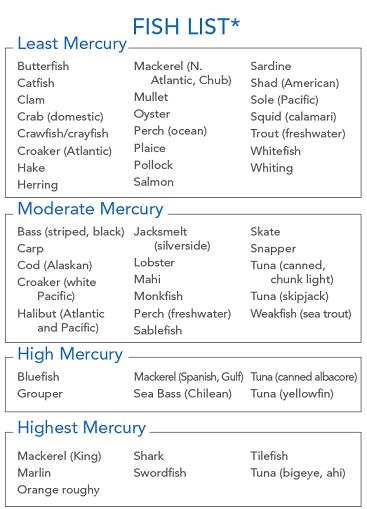Can my cat get mercury poisoning from fish?

While mercury in fish and shellfish is a widespread problem, it doesn’t mean you have to eliminate it entirely from your cat’s diet. Here’s what you should know about mercury poisoning, and how to prevent it.
Mercury poisoning is a big issue, especially when it comes to fish and shellfish. In humans, symptoms of methylmercury poisoning may include peripheral vision impairment, sensory disturbances (“pins and needles”), lack of coordination, muscle weakness, and problems with speech, hearing and walking. Cats show no such signs, but that doesn’t mean they’re immune to the toxic effects of mercury. A human would get some sort of signal that she was getting ill from exposure to this heavy metal – but a cat wouldn’t exhibit any signs of sickness unless the exposure was much, much higher.
Chronic exposure to mercury causes two major problems:
- Severe neurological damage in humans.
- Kidney damage in both cats and humans. In fact, the kidneys are the primary organ in which inorganic mercury is taken up and accumulated.
Why does fish have mercury in it?
Mercury from human pollution ends up in the air, but eventually settles into water, or onto land where it can be washed into water. Once there, certain microorganisms change this heavy metal into methylmercury, a highly toxic form that builds up in fish and shellfish – and in the animals that eat them. Predatory fish at the top of the food chain may contain very elevated levels of heavy metals (including mercury), as well as PCBs, pesticides and other toxins. Tilefish (listed on many commercial cat food labels as “ocean whitefish”) are among the worst, along with tuna, king mackerel, shark and swordfish. In fact, nearly all fish and shellfish contain traces of methylmercury.
Pet food laws are lax
The fish and shellfish found in many cat foods are the main source of mercury exposure in felines. Unfortunately, health laws for meat and fish in pet foods are much more lenient than they are for human foods. The FDA has not established toxic levels of heavy metals in pet foods. In fact, it has been found that many pet foods contain concentrations of toxic metals that far exceed the human limit values, calculated to animal-sized dosages. One study from a few years ago found that mercury levels in cats were five times those usually found in people!
Kidney disease and mercury
Over my 30 years in practice, as mercury levels in fish have exponentially increased, I have noticed that issues like hyperthyroidism, high blood pressure and kidney disease in cats have also skyrocketed.
Compromised kidney function in cats over ten or 12 years of age is epidemic. It may sound a bit complicated, but let’s take a look at how all this works in your cat’s organs. Mercury irreversibly inhibits selenium-dependent enzymes. Among their numerous functions, selenoenzymes prevent and reverse oxidative damage in organs. As the kidney is the main target organ in which mercury accumulates, I can easily extrapolate that the high fish content in many cat foods is contributing to the large number of cases of renal disease we are now seeing in felines.
The National Center for Health Research warns people with impaired kidney function that they can be harmed by mercury exposure when eating fish. Yet many of my clients who have cats in kidney failure entice them to eat by adding tuna to their meals.

What should you do?
Both the EPA and FDA release “fish advisories” (see sidebar) for people due to health concerns about mercury, denoting that this health risk is very real. Both organizations advise limiting fish intake and choosing fish species that are lower in mercury. It makes sense to also limit the amount of fish your cat eats.
Many commercial cat foods have minimal levels of fish as part of their recipes, either for flavoring or perhaps because people like to feed their cats food with some fish in it, thinking it’s tastier for them. I recommend that you examine cat food labels for the type and quantity of fish used.
While mercury in fish and shellfish is a widespread problem, it doesn’t mean you have to eliminate it entirely from your cat’s diet. By learning which fish to avoid, which are safest to feed him, and how often you can treat him, you’ll minimize his exposure to this ubiquitous heavy metal.




